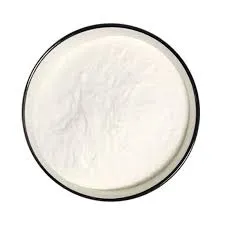
វិច្ឆិកា . 19, 2024 10:03 Back to list
redispersible polymer powder wikipedia
Redispersible Polymer Powder A Comprehensive Overview
Redispersible polymer powder (RDP) is a versatile material that has become increasingly important in various fields, particularly in the construction and building materials industries. These powders are essentially polymer emulsions that have been dried into a powder form and can be re-dispersed in water to form a stable emulsion once again. RDPs provide unique benefits and properties that enhance the performance of various products, making them a crucial component in many formulations.
Composition and Properties
RDPs typically consist of synthetic polymers such as poly(vinyl acetate), polyacrylic, or ethylene-vinyl acetate copolymers. The drying process employed to create the powder does not modify the inherent properties of the polymer significantly, allowing it to retain its advantageous characteristics. When reconstituted with water, these powders can effectively improve adhesion, flexibility, water resistance, and elasticity of the end products.
One of the standout properties of RDPs is their ability to create films that are both strong and flexible. This combination is particularly important in applications where materials are subjected to stress or movement. Additionally, RDPs enhance the workability of cement-based products and can significantly improve the rheological properties of the mixture, making it easier to apply.
Applications in Construction
In the construction sector, RDPs are widely used in various applications including dry-mix mortars, adhesives, tile grouts, and patching compounds. Their incorporation into tile adhesives, for instance, enhances the bonding strength between the tiles and the substrate, ensuring longevity and durability. Furthermore, the inclusion of RDPs can help to reduce water absorption, further protecting structures from moisture damage.
Another key application of redispersible polymer powders is in external insulation and finishing systems (EIFS). In these systems, RDPs provide essential flexibility and durability to the insulation panels, allowing them to withstand temperature fluctuations and external stresses without cracking. This makes buildings more energy-efficient while maintaining their structural integrity.
redispersible polymer powder wikipedia

Benefits Over Traditional Polymers
Compared to traditional liquid polymer emulsions, RDPs offer several key advantages. Their powder form allows for easier storage and transportation, simplifying logistics for manufacturers and contractors. Additionally, redispersible powders can lead to more accurate dosing and lower waste compared to liquid systems, as they can be mixed in just the right proportions.
Moreover, manufacturers benefit from improved shelf-life stability with RDPs, as they are less prone to microbial growth than their liquid counterparts. This feature is particularly important in construction and renovation projects, where materials may be stored for extended periods.
Environmental Considerations
As the demand for sustainable construction materials increases, RDPs are gaining attention for their potential to create more environmentally friendly products. Their ability to enhance the bonding properties and performance of formulations can lead to reduced material usage and increased energy efficiency in buildings. Furthermore, RDPs can be formulated to be free from volatile organic compounds (VOCs), thereby contributing to healthier indoor air quality.
Conclusion
In summary, redispersible polymer powders are an essential innovation in the construction industry, providing numerous benefits that enhance the performance of various building materials. Their unique properties allow for improved adhesion, flexibility, and water resistance, making them ideal for a wide range of applications. As the construction sector continues to evolve towards more sustainable practices, RDPs stand out as a practical solution that not only meets performance standards but also aligns with eco-friendly initiatives. With ongoing research and development, the potential for redispersible polymer powders is significant, promising enhanced materials for future construction challenges. As the industry adapts, RDPs will likely play a pivotal role in shaping the future of building materials.
-
Versatile Hpmc Uses in Different Industries
NewsJun.19,2025
-
Redispersible Powder's Role in Enhancing Durability of Construction Products
NewsJun.19,2025
-
Hydroxyethyl Cellulose Applications Driving Green Industrial Processes
NewsJun.19,2025
-
Exploring Different Redispersible Polymer Powder
NewsJun.19,2025
-
Choosing the Right Mortar Bonding Agent
NewsJun.19,2025
-
Applications and Significance of China Hpmc in Modern Industries
NewsJun.19,2025







